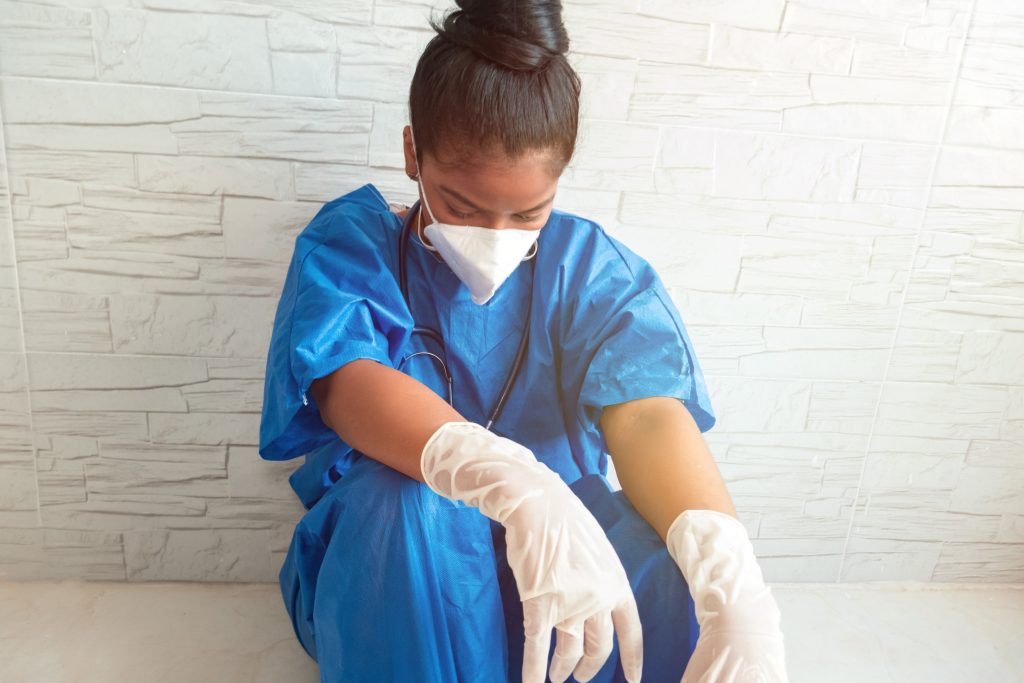Note: Every year, we count down the top ten stories of the year, as voted on by NM Political Report staffers.
See our entire countdown of 2020 top stories, to date, here.
10. Migrants in detention
Although “Free Them All Friday,” a rally held by car at the Cibola County Correctional Facility in May tried to alert the public and officials to the dangers of holding migrants in detention facilities during the COVID-19 pandemic, the state said there was little it could do.
According to advocates at the time, migrants were refusing to eat because they were expected to sit in a dining room with 350 others.
One advocate, healthcare worker Leah Jo Carnine, said immigration “should not be a death sentence.” A study produced by a Washington DC, nonprofit projected that as many as 72 percent of detainees could be infected with COVID-19 during the pandemic.
A spike in cases at Cibola County Correctional Facility in July alarmed officials. But because of the secrecy that enshrouds the three privately run detention facilities in the state, advocates, officials and experts did not know if the spike involved migrants or how many. Cibola County Correctional Facility also houses inmates. U.S. Sen. Martin Heinrich spoke with NM Political Report about the lack of transparency and questioned whether privately run migrant detention centers should exist at all.
Another privately run migrant detention facility in southern New Mexico, Otero County Processing Center, contacted Otero County in March, after the pandemic began, asking if the county wanted to partner with the company, Management and Training Company (MTC) to “co-locate” migrants or inmates to fill bed space in the coming months. At the time MTC worried that because of the pandemic, there would be a reduction of people using the beds in the facility. Otero County received $457,730 for the last fiscal year for MTC’s management of the processing facility and the prison next to it.
-Susan Dunlap
9. Public health order lawsuits
Nearly as soon as Gov. Michelle Lujan Grisham and the New Mexico Department of Health issued public health orders that limited how businesses could operate during the COVID-19 pandemic, opponents challenged the orders in court.
During oral arguments before the New Mexico Supreme Court, the state argued that under the Public Health Emergency Response Act (PHERA), state officials are allowed to not only order businesses to close to the public, but also impose fines for noncompliance.
A lawyer arguing on behalf of a group of businesses argued that state officials conflated PHERA and other statutes erroneously and that enforcement provision of PHERA should not be used in conjunction.
The high court ruled in favor of the governor and health department and in a written opinion, Justice Judith Nakamura said the argument against the state was “ultimately unpersuasive.”
Another issue that was raised during oral arguments, by the governor’s lawyer, was a growing list of lawsuits filed in state district courts that argued businesses that were shut down because of the public health orders were due compensation from the state. The state Supreme Court declined to address the issue initially because it was not raised in the initial petition that was filed by the group of business owners. In anticipation of the issue eventually heading to the state Supreme Court, NM Political Report spoke with former state Senator Dede Feldman, who sponsored the bill that would eventually become PHERA. Feldman said the section in the act that addresses “takings” or eminent domain refers only to medical companies.
As expected, the issue was brought to the high court. New Mexico Attorney General Hector Balderas argued on behalf of the state and asked the court to address the question. Balderas filed the state’s written argument earlier this month and oral arguments are scheduled for early January.
-Andy Lyman
8. Schools go online
New Mexico public schools shifted to remote learning in March shortly after Gov. Michelle Lujan Grisham’s first public health order. By the end of the month, students were learning via online applications and Lujan Grisham extended the public health orders, as well as announcing that students would continue distance learning through the end of the semester.
But the COVID-19 pandemic made the inequities of education starkly visible. Even though school buildings were closed to in-person learning, food service workers across the state continued serving meals to students in need, and their families.
That put food service workers at greater risk for COVID-19 infection and in May, two meal distribution sites within Gadsden Independent School District based in Chaparral, NM closed in May due to possible COVID-19 exposure.
With the first special Legislative session in June and concerns about budget cuts to the education budget, school superintendents spoke out about the difficulties of educating students remotely, especially when so many lack the tools necessary for online instruction.
The pandemic has also been hard on women, both across the nation and in the state. Several women spoke with NM Political Report earlier this fall about the difficulties of managing their students remote learning while also simultaneously being present for their jobs.
-Susan Dunlap
7. Climate change and drought
After a snowy winter, the water outlook for New Mexico was rosy in January. But as the snowpack melted and the spring precipitation failed to materialize, things began looking worse by March.
For the first half of the year, the northern portion of the state, along the Colorado border, experienced the worst of the drought. The Four Corners area in particular has been an epicenter of drought conditions for a few years now.
But by the end of the summer, nearly every region of the state was in drought. By December, 100 percent of the state was classified as being in some form of drought by the U.S. Drought Monitor.
The state’s rivers — and by extensions the agricultural communities that rely on those waters — didn’t fare well either. By July, water flows in the Rio Grande were so low that the river would have dried up through Albuquerque, if not for an emergency release of water stored upstream that kept the river wet for a few more months.
North America entered a La Niña year, which means the state likely won’t see enough precipitation this winter to make up for the drought. Next year could be an even drier one. The bottom line is that climate change is shifting how the region experiences precipitation. And that, water managers say, will likely impact New Mexico’s water future.
-Kendra Chamberlain
6. Two special sessions
This year, the New Mexico Legislature met three times: Once for its regularly scheduled 30-day session, then again in two special sessions to address the impacts of COVID-19.
The special session in June adjusted the state budget and COVID-19-safe election procedures for the general election and again in November to reallocate COVID-19 relief.
Two special sessions in a single year is a rarity in New Mexico. The last time this happened was in 2001.
The first special session had a handful of bills in addition to the reworked budget and one-time election changes. One provided tax relief, another created a civil rights commission. Also, a bill to require police departments to have body cameras for officers was passed.The second special session lasted less than eight hours days before Thanksgiving and allocated over $300 million of COVID-19 relief.
-Matthew Reichbach






















